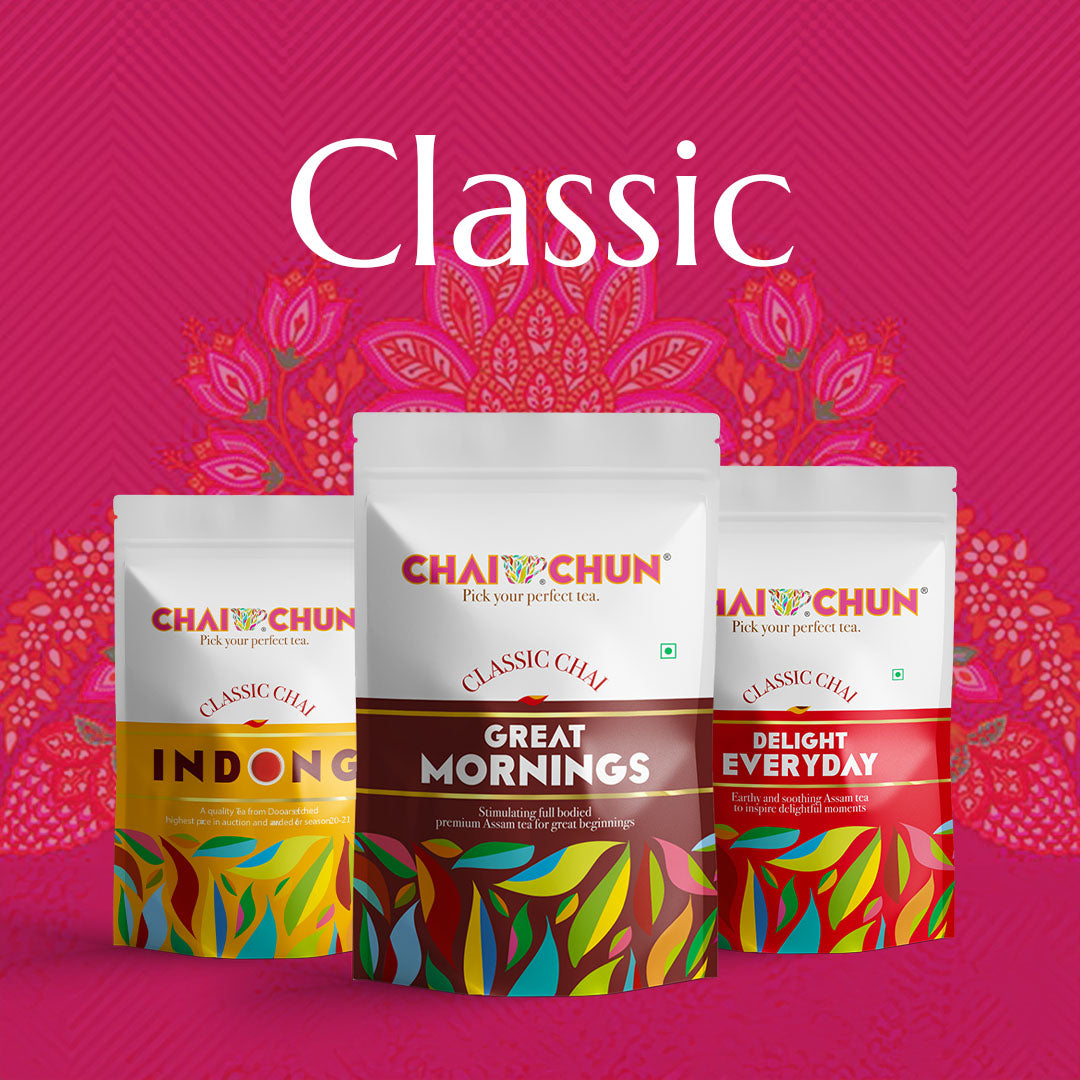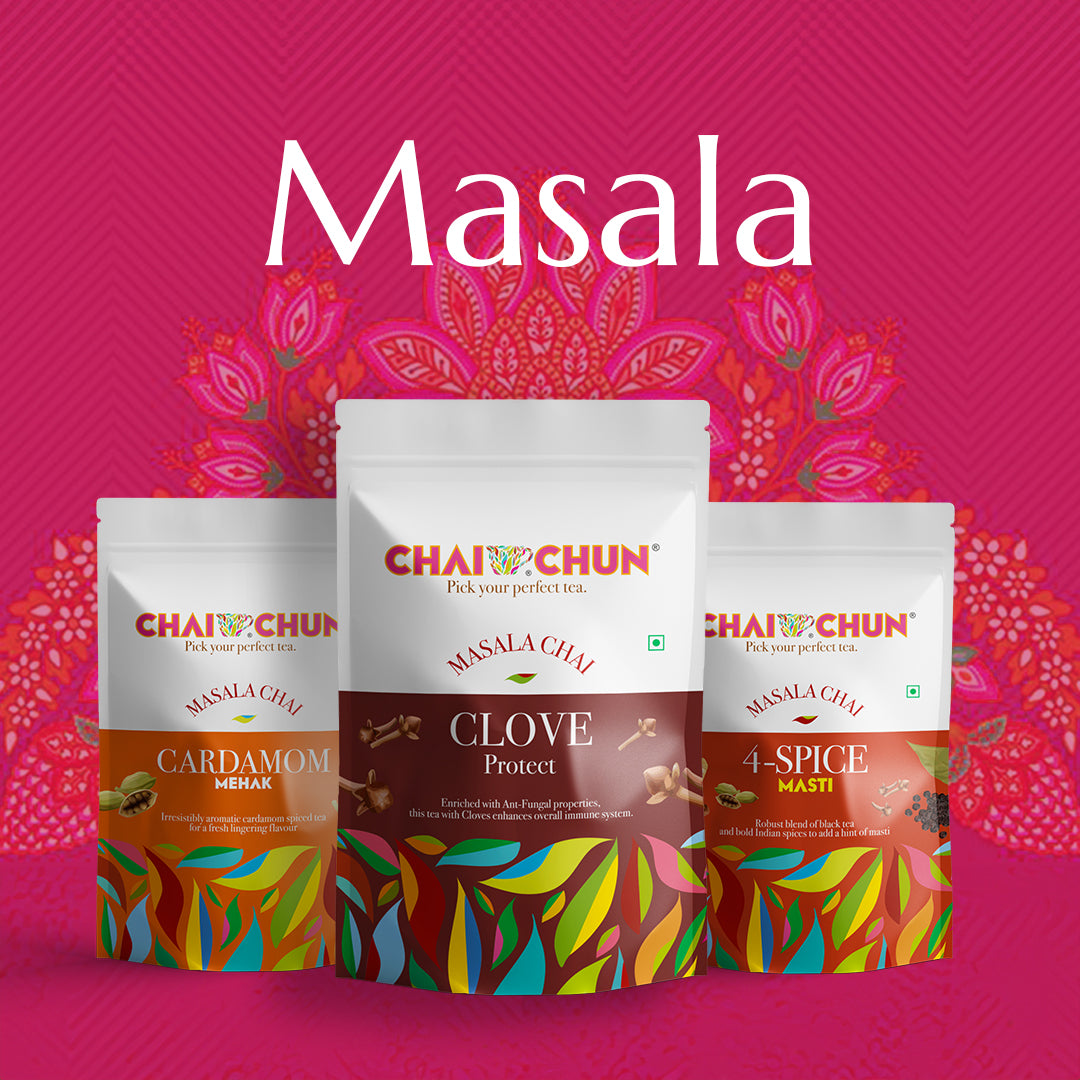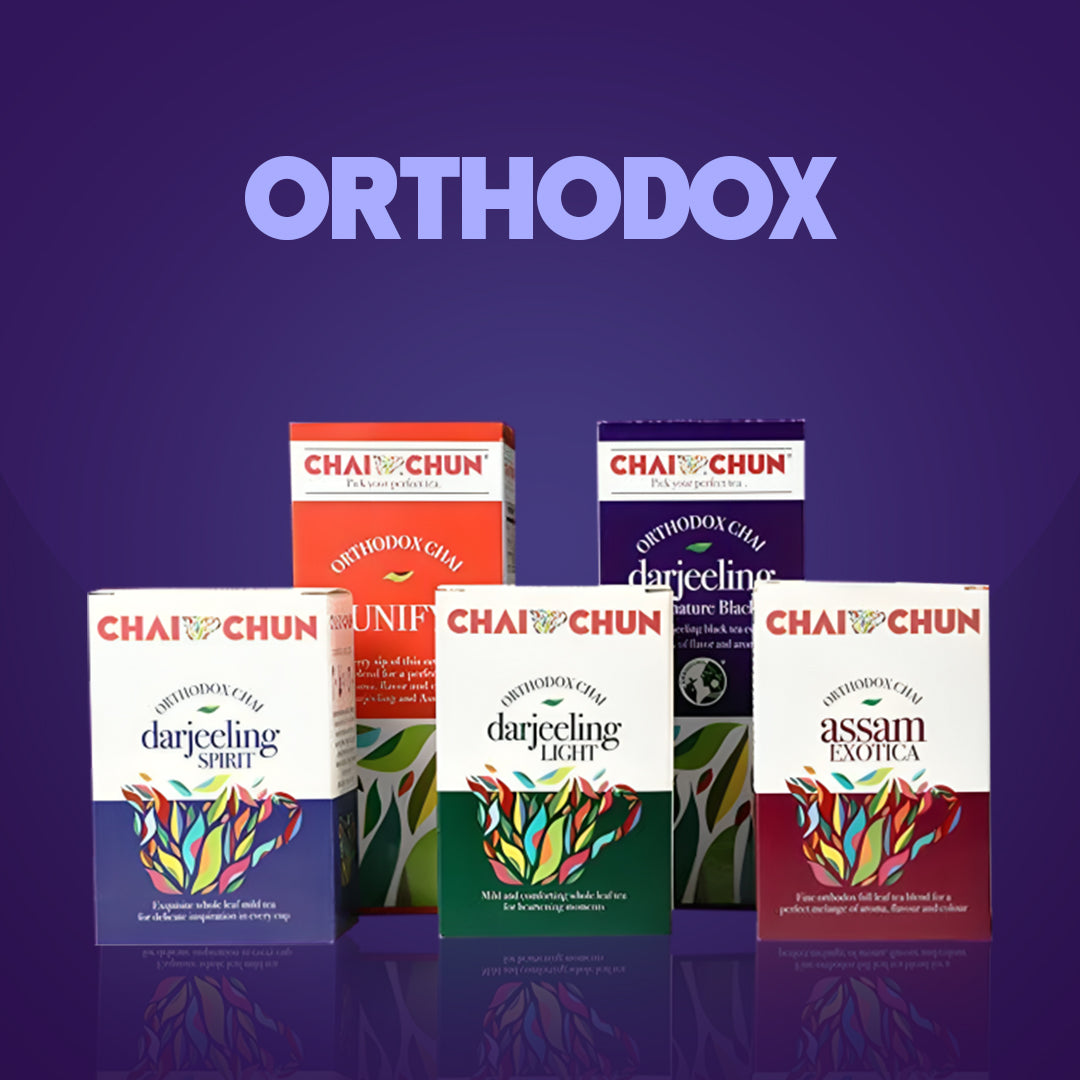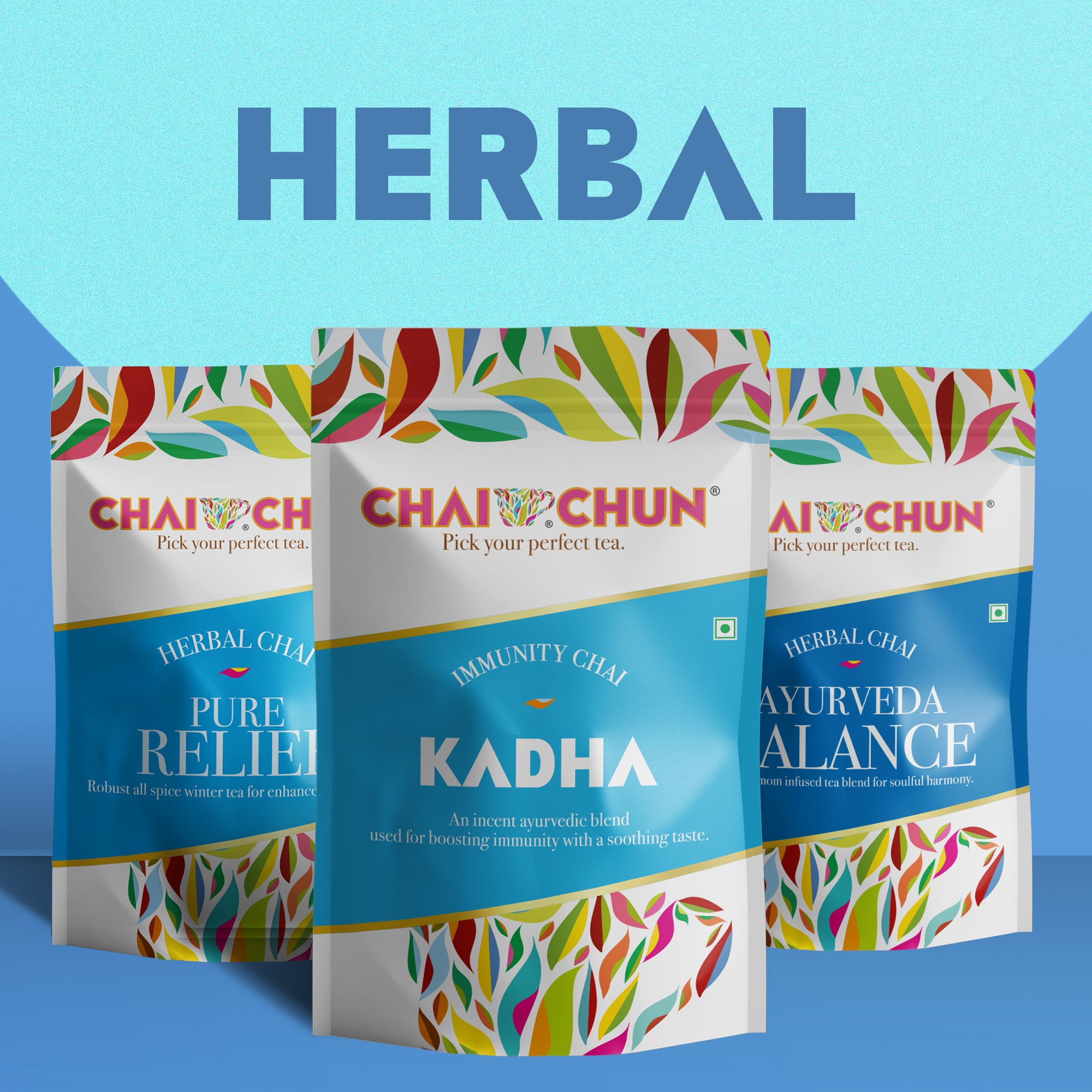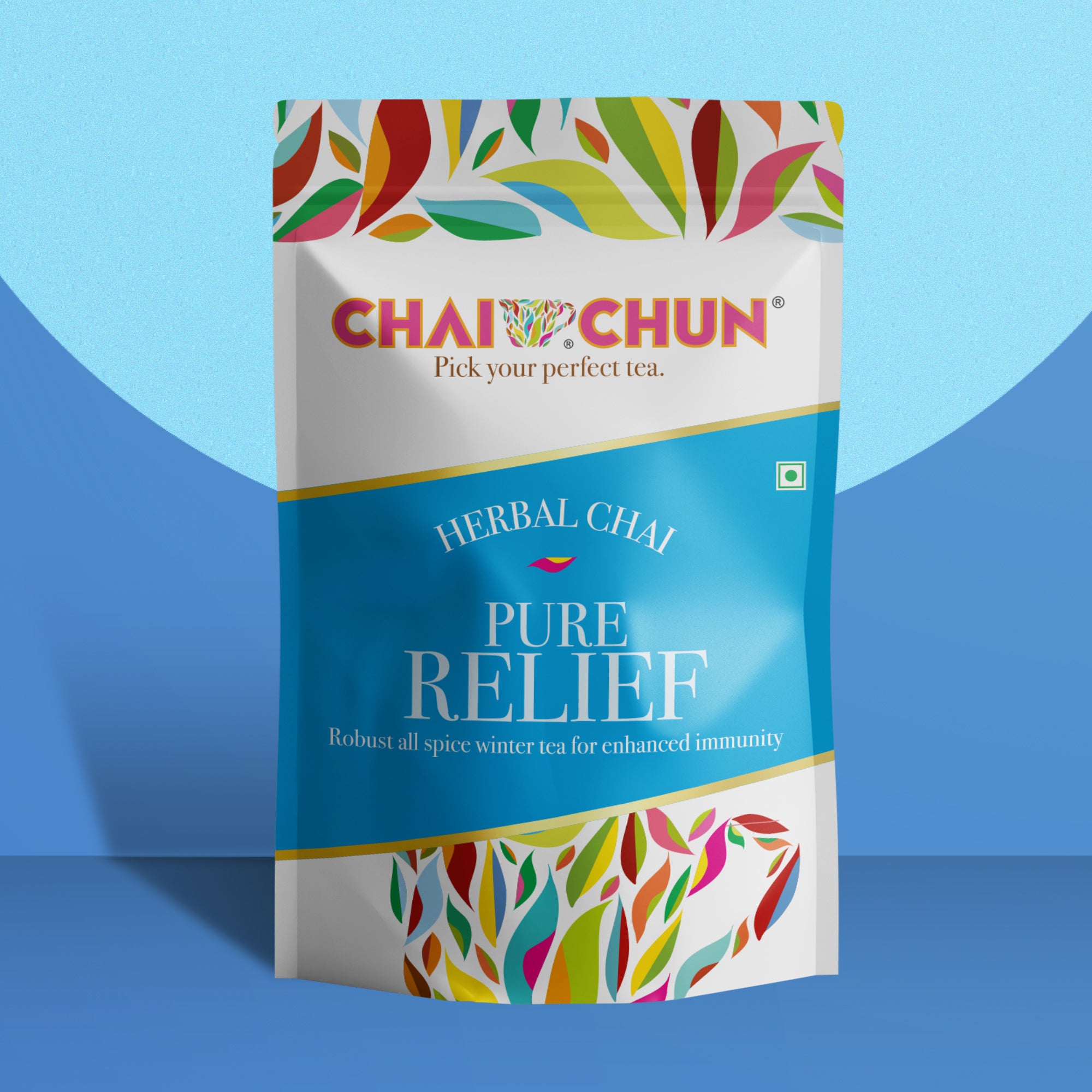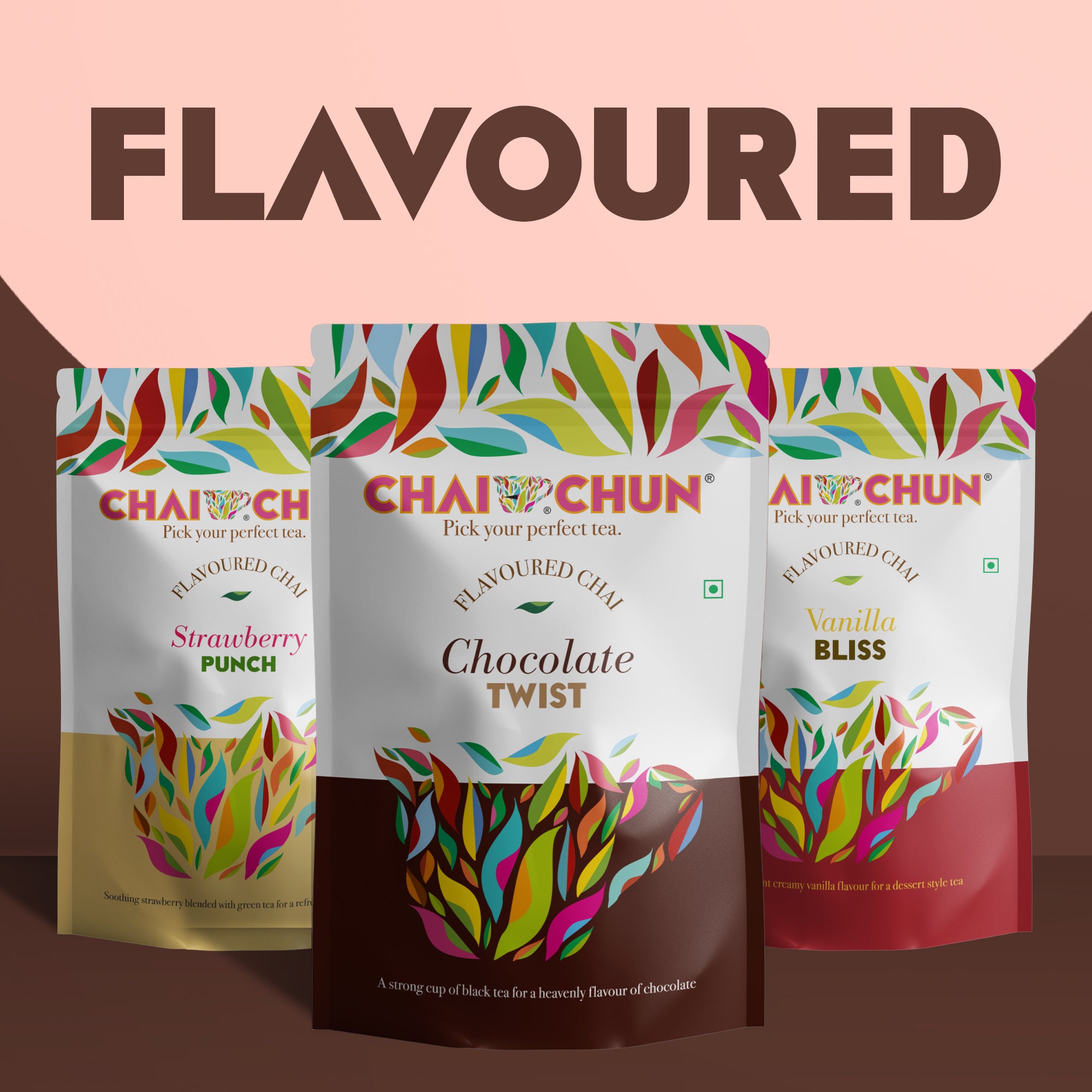Oolong Tea
These are teas for which oxidation has been interrupted mid-process. 2 main categories: lightly oxidised teas (10%-15% oxidation - Chinese way) and more oxidised teas (60%-70% - Taiwanese way)
However, each plantation has its own recipes and produces teas with a degree of oxidation that does not necessarily correspond to these two categories.

Stages of oolong tea manufacturing
-
Withering
 ▪ Leaves are left to wilt out for a few hrs under slatted panels that filter sunlight.
▪ Leaves are left to wilt out for a few hrs under slatted panels that filter sunlight.
▪ Some moisture evaporates before the leaves are in a room with high moisture
▪ Oxidation occurs during the sweating phase.
▪ Oxidation is the result of an enzyme which causes the leaves to turn red from the edges towards the centre and determines aromatic profile of the tea. -
Rolling
 ▪ Once the desired degree of oxidation has been reached, roasting allows the enzyme reaction to be stopped.
▪ Once the desired degree of oxidation has been reached, roasting allows the enzyme reaction to be stopped.
▪ This procedure is identical to that used to produce green teas. -
Rolling
 ▪ The rolling process gives the tea leaves their twisted shape.
▪ The rolling process gives the tea leaves their twisted shape.
▪ Naturally, the leaves are often very large and are simply creased or rolled into large pearls, as is the case with Dong Ding teas. -
Sweating
 ▪ This is the most important stage in the preparation of semi-oxidised teas.
▪ This is the most important stage in the preparation of semi-oxidised teas.
▪ The leaves are placed at a constant temp.of 22°C - 25°C with a humidity level of 85%, they are continually stirred with ever-increasing force.
▪ This allows the aroma to be released and facilitates the evaporation of water.
▪ The final degree of sweating depends on duration of this process: oxidation is stopped when leaves have reached a 10%-12% degree of oxidation, which produces light teas with a leafy flavor.
▪ The longer period of sweating allowing oxidation of up to 70% to produce darker, fruitier teas.

